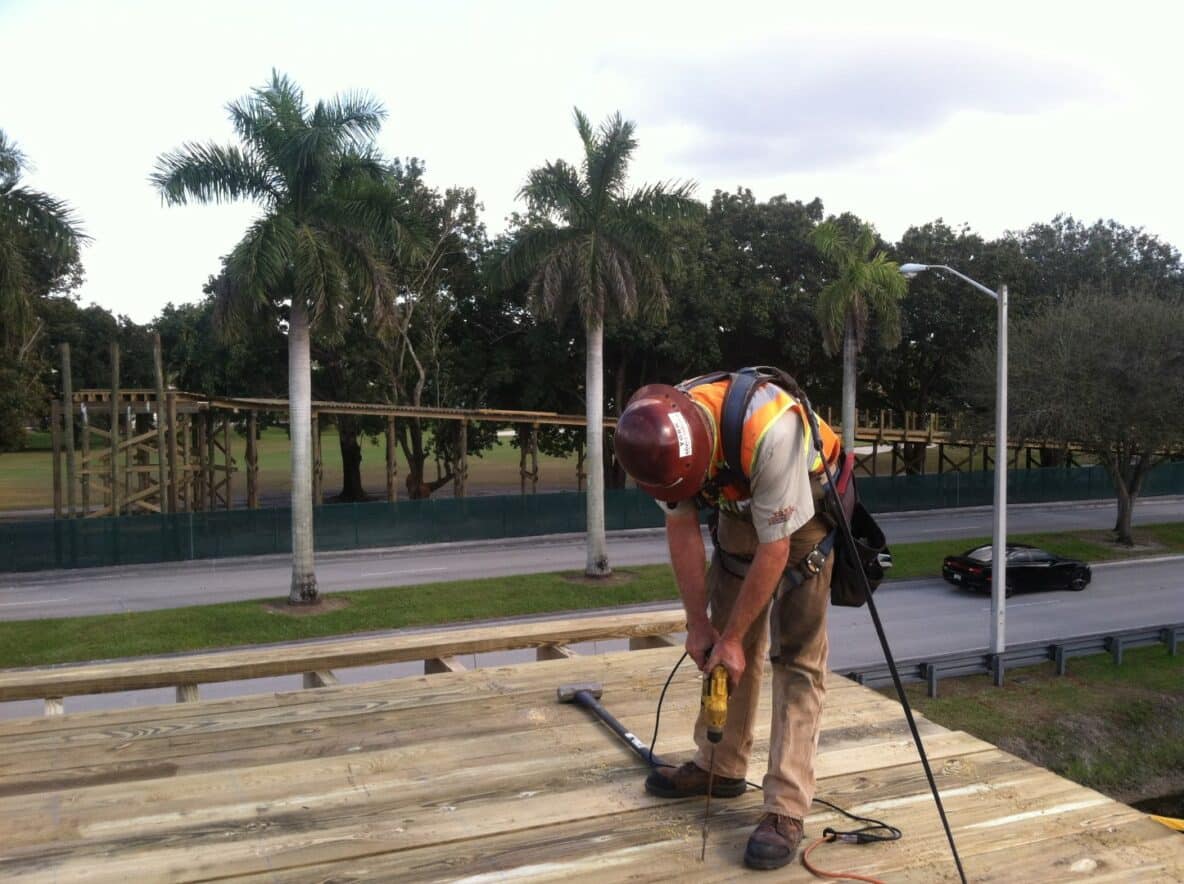Construction Evolution For Wooden Bridges: A Journey Through Craftsmanship and Innovation
The art of constructing wooden bridges is a journey that marries time-honored traditions with modern ingenuity. Imagine standing in a quiet forest, the air heavy with the scent of freshly cut timber, as a team of artisans works to bring a vision to life. This is where the story of wooden bridge construction begins—in harmony with nature and rooted in centuries of human ingenuity. This article will touch on the evolution of wood bridges from simple log bridges to the iconic wood bridges we love today.
The Birth Of Timber Bridges
In the earliest days, wooden bridges were born out of necessity and resourcefulness. Picture a small group of pioneers faced with a swift-running stream. Using only the tools at hand, they harvest large logs from the surrounding forest, stripping away the bark to reveal the raw strength beneath. These logs are laid across the water, anchored by sturdy stone supports, creating a pathway that connects one side to the other. These log bridges, though simple, were a testament to human determination and the ability to adapt to the environment.
These early creations were not without their challenges. The pioneers marveled at how these humble structures served their purpose, enabling trade, travel, and connection.
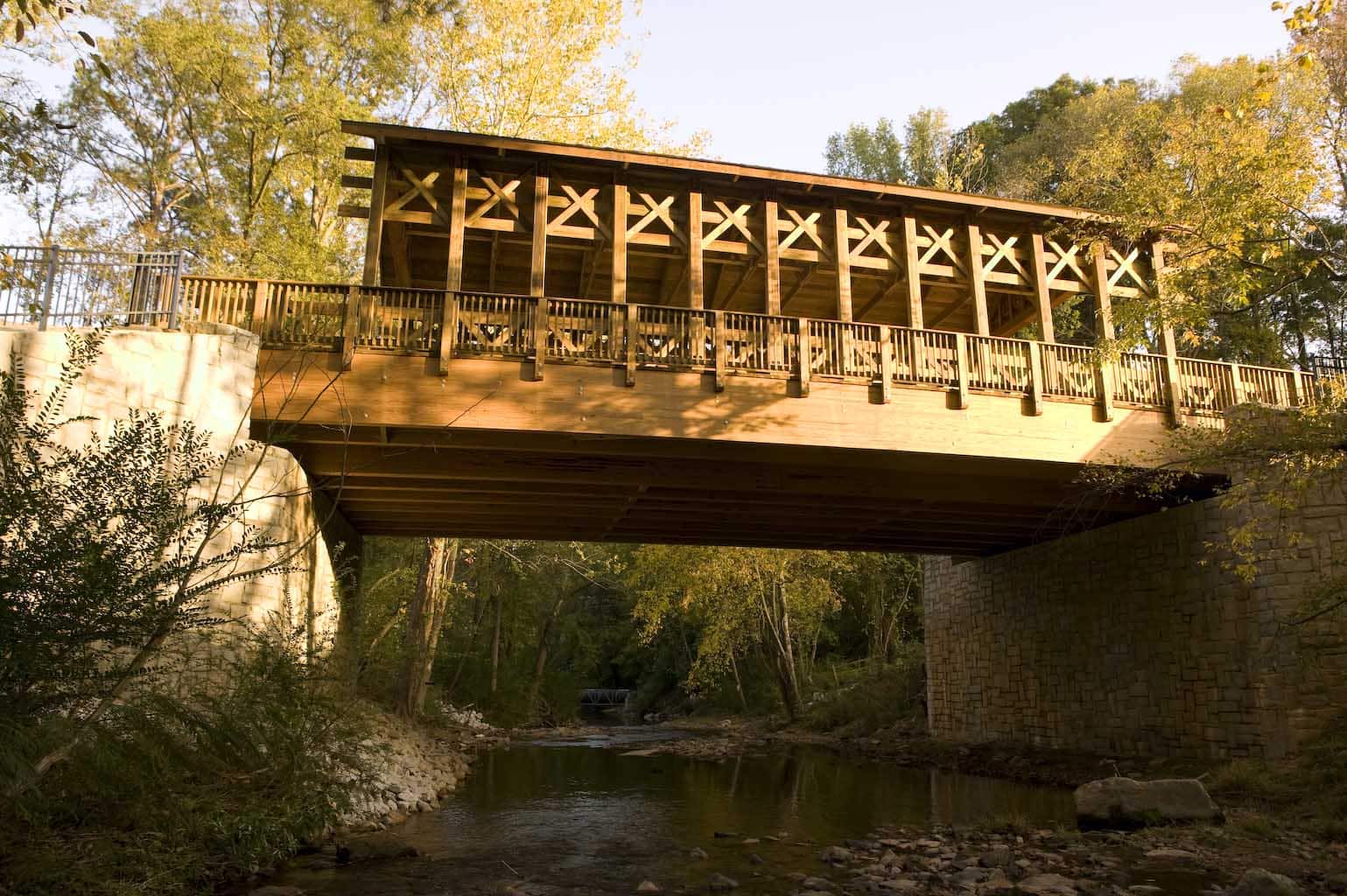
The Elegance of Covered Bridges
Fast forward to a time when villages and towns began to dot the landscape. Bridges were no longer just practical; they became symbols of progress and community. Picture a bustling rural town where the centerpiece is a covered wooden bridge. The sounds of horse hooves and wagon wheels echo through its sheltered span, the evolution of wood bridges protected from rain and snow by its pitched roof & enclosed sides.
Craftsmen of the time, with their saws and hammers, built these bridges with precision and care. They employed intricate truss systems—King Post, Queen Post, and Burr Arch designs—ensuring the bridges could withstand both the weight of traffic and the test of time. Covered bridges became more than functional crossings; they were landmarks that inspired poets and painters alike, their weathered wood holding stories of countless journeys.
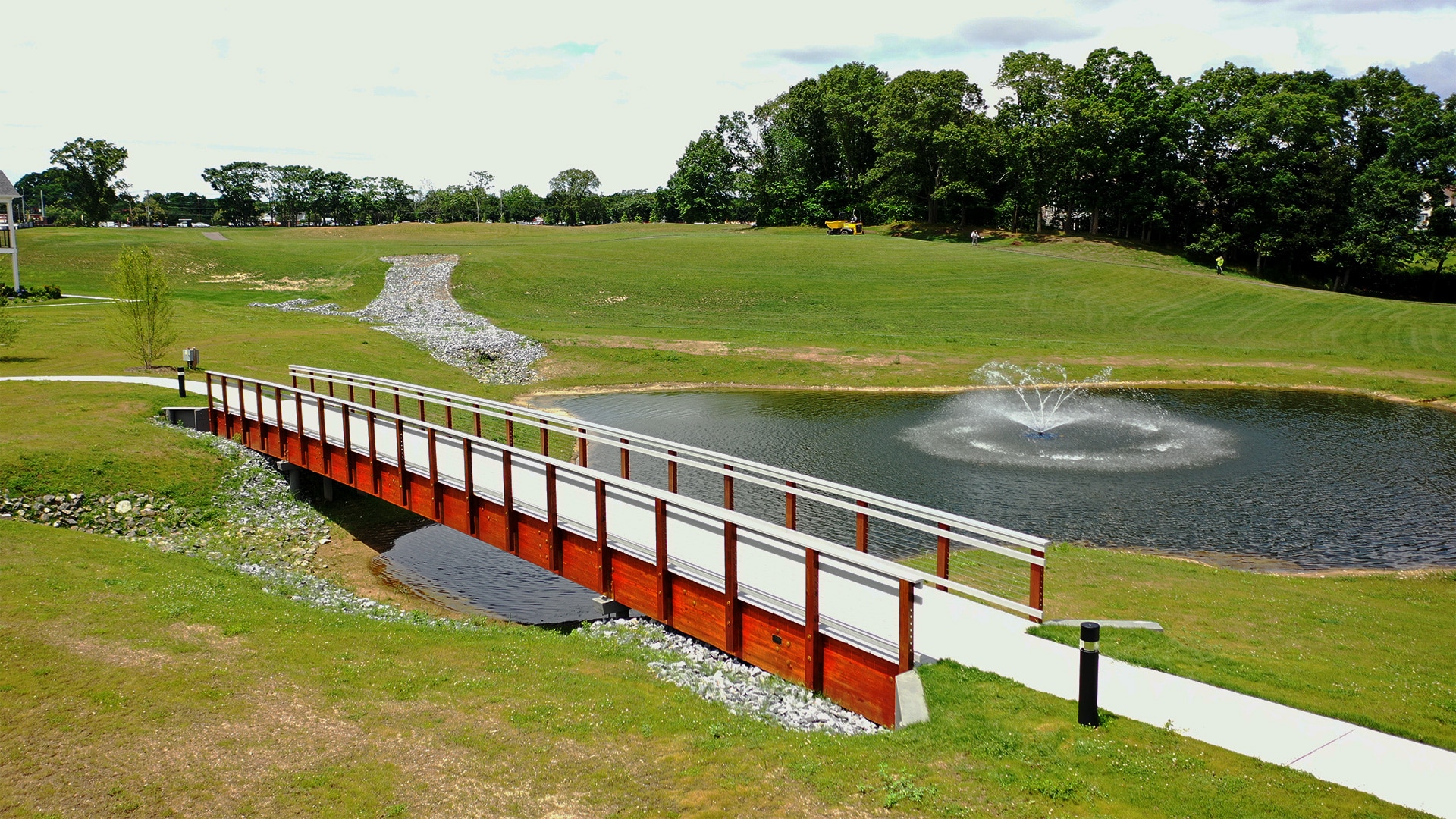
The Dawn of modern engineering
As the industrial era unfolded, wooden bridge construction underwent a transformation. Where skilled engineers and laborers work side by side, crafting beams from layers of laminated timber. This is the birthplace of Glued Laminated Timber, or Glulam, a marvel of engineering that redefines what wood can achieve.
The process is meticulous: thin planks of wood are bonded with high-strength adhesives, forming beams capable of spanning vast distances. These beams are then transported to construction sites, where they become the backbone of majestic bridges that combine strength and beauty.
Not long after, another innovation emerges: Cross-Laminated Timber, or CLT. This method stacks wooden panels in alternating directions, creating structures that are both lightweight and incredibly strong. Picture the efficiency of a construction site where CLT panels are lifted into place with precision, the entire bridge taking shape like a life-sized puzzle. These techniques bring wooden bridges into the modern era, where sustainability and performance go hand in hand.
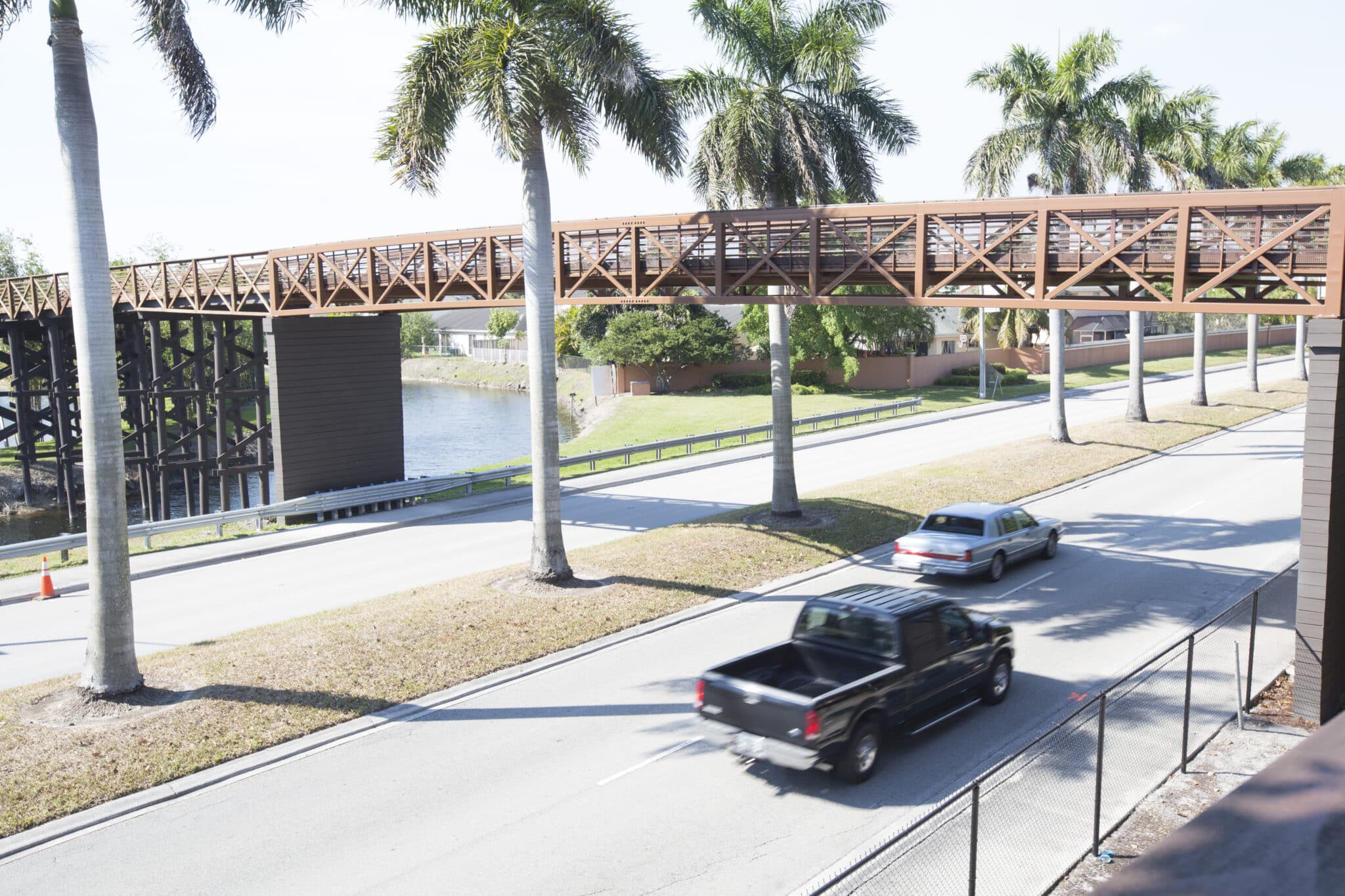
Hybrid Bridges: The Best of Both worlds
Imagine a bridge that combines the warmth of wood with the resilience of steel or concrete. Hybrid bridges are the result of this creative fusion, allowing engineers to push boundaries while maintaining the natural aesthetic of timber.
Timber beams are paired with steel reinforcements, while concrete foundations anchor the structure securely to the ground. As the bridge comes to life, it stands as a testament to collaboration—a blend of tradition and innovation that meets the demands of modern infrastructure is the epitome of the evolution of wood bridges.
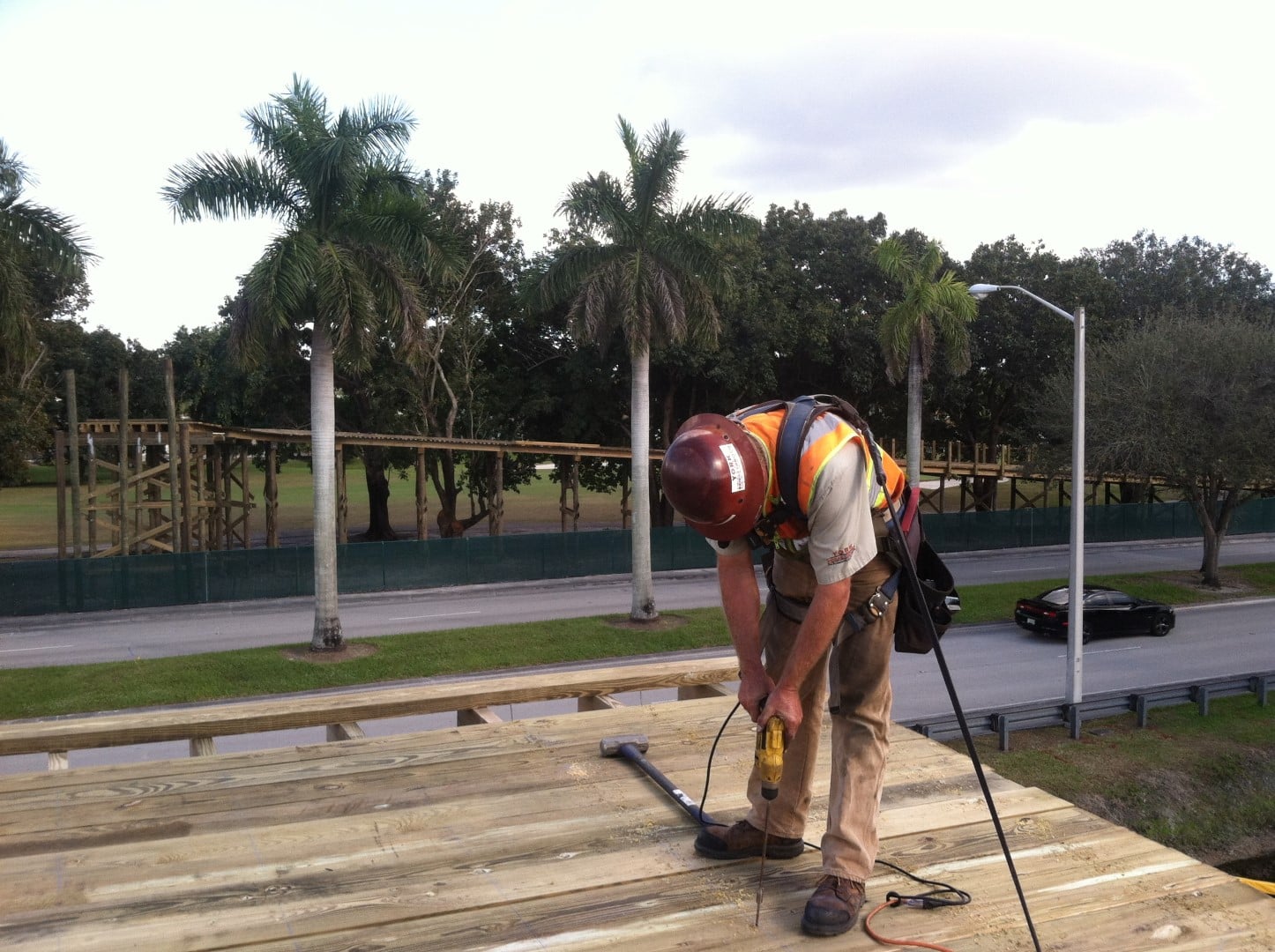
On-Site Construction with efficiency
In today’s world, where efficiency and environmental stewardship are paramount, sustainable construction techniques for wooden bridges takes center stage. Our skilled craftsmen build bridge components on-site reducing the amount of weight for shipping and accounts for any nuances and adjustments needed due to site conditions. Every beam, decking, and connection is meticulously prepared on the construction site leading to efficiency and flexibility.
The pieces come together like a symphony. Cranes lift massive components into place, and workers secure them with precision. In just days or weeks, what was once a blueprint becomes a bridge—a seamless blend of craftsmanship and modern logistics that minimizes disruption to the surrounding environment.
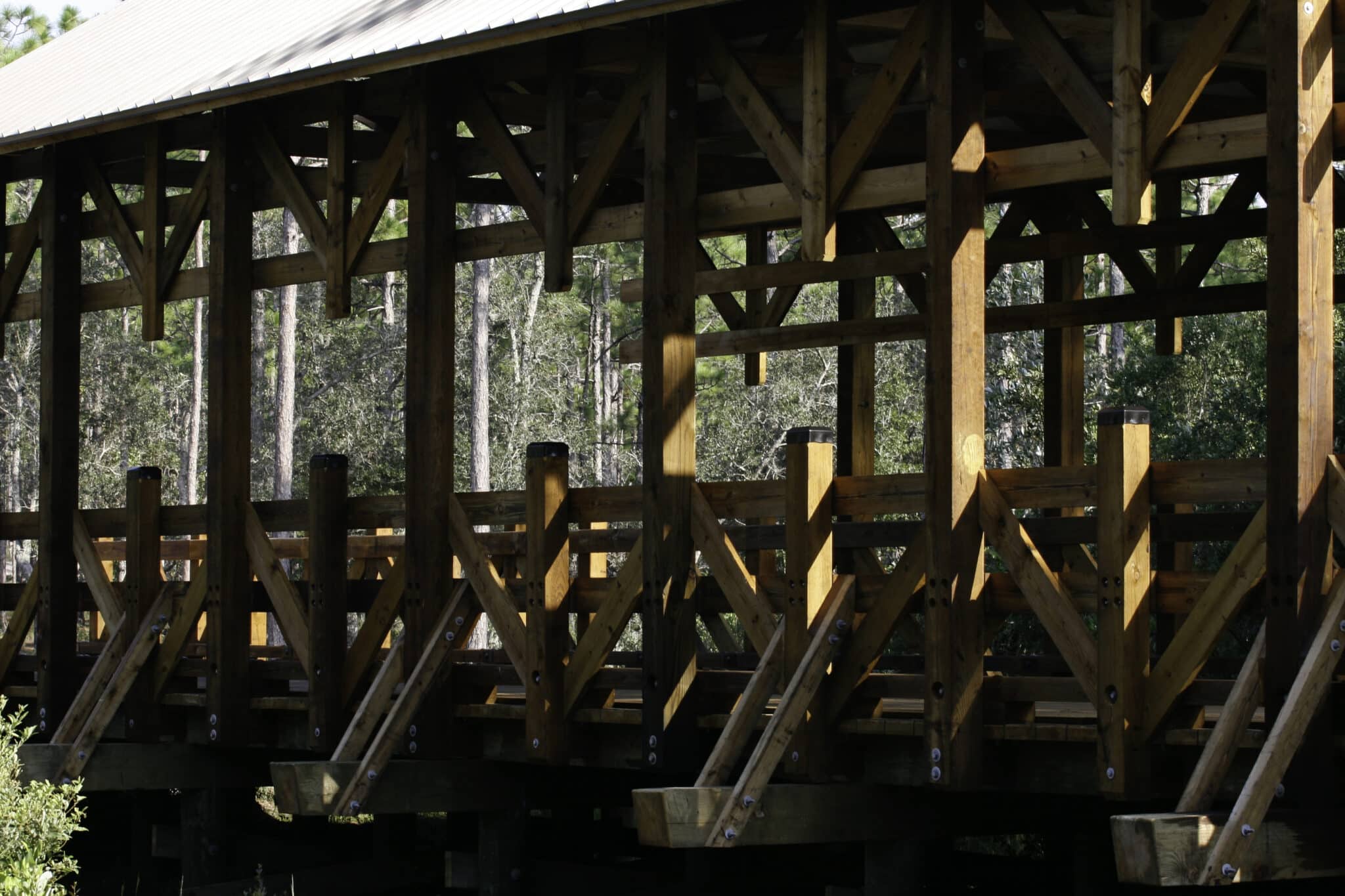
Construction Techniques For Wooden Bridges: Sustaining the Beauty of Wood
As we move forward in the evolution of wood bridge construction, preserving the beauty and integrity becomes a priority. Our trusted suppliers carefully apply pressure treatments to timber, infusing it with preservatives that resist degradation and insects. Protective coatings from our Legacy & Contemporary Trim Levels shield the wood from the sun’s harsh rays and the relentless assault of elements like rain, snow, and saltwater.
Maintenance plans play a vital role in this story. We inspect our bridges for signs of wear, replacing damaged components and ensuring that these structures continue to serve their communities for generations. Through YBC's efforts, the legacy of wooden bridges is not just preserved but celebrated with a design lifespan lasting over 75 years.
A Timeless Connection
From the rustic log bridges of yore to the sophisticated glulam and hybrid designs of today, wooden bridge construction is a narrative of human ingenuity, respect for nature, and a desire to connect. Each bridge tells a story, not just of its construction but of the lives it touches and the landscapes it enhances.
As you walk across a wooden bridge, take a moment to reflect on the journey it represents. The techniques may have evolved, but the essence remains the same: a bridge is more than a structure—it is a testament to our enduring connection with the world around us.
Create Your Legacy Today
Discover the intersection of strength, durability, and environmental responsibility with York Bridge Concepts. Let's build a bridge to the future together.

